What is good about an electronic lock on the front door - what are they and where are they used
An electromechanical or electronic lock on the front door is a hallmark of modern security and access control systems used to equip residential premises, including smart home life support systems. Such devices are far from new - most front doors have their modifications, which can only be opened with a contactless key, which dramatically reduces the possibility of outsiders entering the entrance.
Benefits of using
Especially popular with owners of city apartments is a digital lock on the front door, the main advantages of which are:
- the ability to install most models with your own hands;
- high level of security provided by several levels of protection;
- an electronic lock in combination with an electromechanical lock is as reliable as a manual deadbolt;
- commercially available electronic locks on the market can be installed anywhere on the door panel or outside it.
- the possibility of opening and closing with a different key - a plastic card, a remote control, a digital contact key fob, using a smartphone.
Even professional "burglars" who own modern technologies and tools for unauthorized access (including digital lock picks) prefer to bypass an apartment if an electronic lock is installed on its front door.
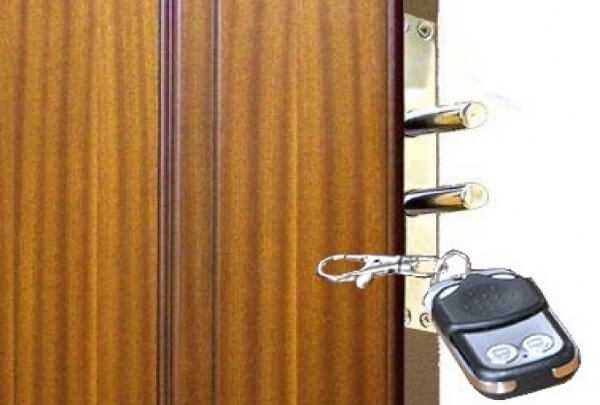
Types of castles
Today, various types of devices for restricting and controlling access are produced for domestic use, which are called “electronic locks”. The concept itself includes many products, the main difference of which from traditional constipation is the absence of a metal key, which “has a habit” of getting lost. Today, for do-it-yourself installation on the entrance doors of residential premises, the most interesting are:
- electromechanical locks with combined or coded opening that can be installed on entrance gates and gates, room, entrance and apartment entrance doors;
- digital devices opened with a plastic card with a magnetic strip - an identifier or an electronic key fob;
- an invisible electronic lock that does not have a key hole, a keypad or an information reader, controlled remotely using a remote control or a mobile gadget using wireless IT technologies;
- biometric systems that provide controlled access to a protected area by reading a fingerprint or scanning the retina.
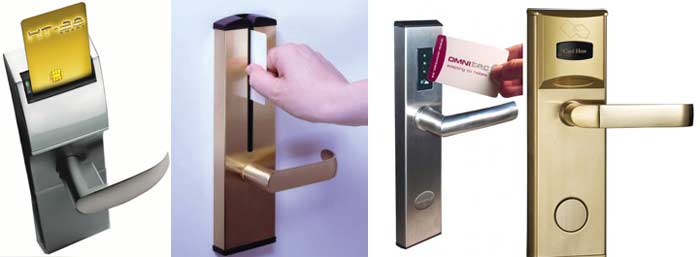
Design features of various models
Today, the most common push-button type electronic locks that do not require any key are equipped with most entrances of multi-storey buildings. Also, these devices are installed inside offices to provide access to a certain category of people.
In this case, the possibility of accounting for working hours and access control is implemented.
Structurally, a coded digital lock can be:
- electromechanical type;
- electric with magnetic lock.
According to the installation method, this category of products is divided into mortise and overhead devices. At the same time, overhead models are more convenient for do-it-yourself installation. The main advantage that a digital combination lock has is an ultra-high degree of protection of the premises from unauthorized entry. It is almost impossible to find a code for it, digital master keys do not work on it, and it is not possible to break the electromechanical deadbolt in a short time.
The owner of a country house can easily install with his own hands a household model of this product on the entrance gate or door, as well as equip any outbuildings on his site with a coded electromechanical lock. The simplicity of design and reliability of electrical and electromechanical coded locks also has its drawbacks, the main of which is the impossibility of opening the lock, if it breaks, without using a set of locksmith tools. Simple (cheap) models limit the ability of hosts to access in the absence of mains voltage.
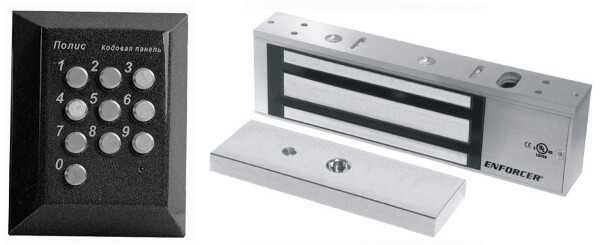
Digital lock with card key
Today, digital locks are becoming increasingly popular, the opening of which is carried out using a plastic card, similar to a bank one. The technology for reading identifying information from a magnetic tape (stripe) has been sufficiently developed and household locking devices of this category are quite reliable in operation.
To increase safety, the electronic control circuit is supplemented with a powerful electromechanical lock.
A similar principle of operation has an electronic lock with a contact, programmable key fob. However, despite the high degree of development of circuit solutions, these models have the following disadvantages:
- high complexity (for some models, the impossibility) of installing constipation with your own hands;
- the possibility of failure of the microcircuits of the electronic "stuffing" during power surges or power outages is not ruled out;
- sensitivity of the magnetic stripe to external pollution;
- If the electronic key card is lost, its recovery may require reprogramming the device.
Invisible locking devices
Modern electronic stealth locks work remotely. In this case, the “key” is either an electronic key fob (control panel) or a mobile gadget. In the latter case, the signal from the smartphone through the mobile operator or satellite communication is sent to the control unit, where it is identified, followed by the operation of the locking mechanism.
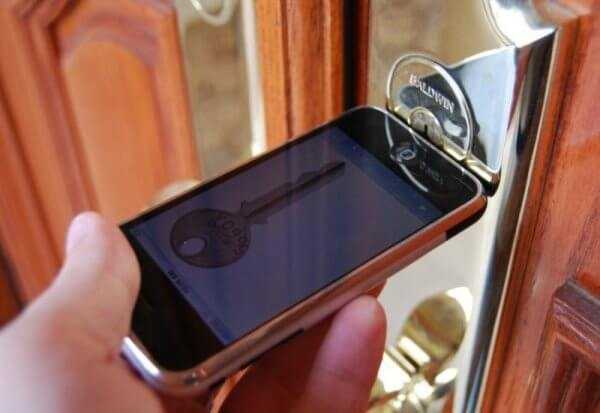
In the west, biometric specimens have appeared that do not require typing a numeric or alphabetic code on the touch screen, which use the fingerprint of the owner of the premises. Of course, it is impossible to make such a digital lock with your own hands. However, using it provides more security to the living space and provides the user with more comfortable operation.
Constipation design
Despite the variety of models of electronic locks and differences in their functionality, the principle of their operation and the general constructive construction are identical. Any device for controlled access consists of:
- an electronic unit that reads information and identifies it;
- electromechanical lock, which in most designs uses an electromagnetic deadbolt.
An eclectic signal from the electronic unit is fed to the control unit, where voltage is generated to operate the electromagnetic coil, which retracts the deadbolt (bolt). The return of the striker plate to its original state is carried out spontaneously, in the absence of tension, due to the return spring.
How the hidden lock works, in the video below:
Some owners of residential real estate, having bought a complex electronic locking device that has several levels of protection and a considerable cost, wanting to save money, prefer to do it themselves. In this situation, several "pitfalls" are possible:
- most manufacturers will void the warranty when installing an electronic lock (especially digital, remote or biometric) on their own;
- wireless and card controlled access systems require initial programming, which is performed by an employee of a specialized company;
- The constant, ever-increasing complexity of digital locks requires professional knowledge and skill that many "home craftsmen" do not possess.
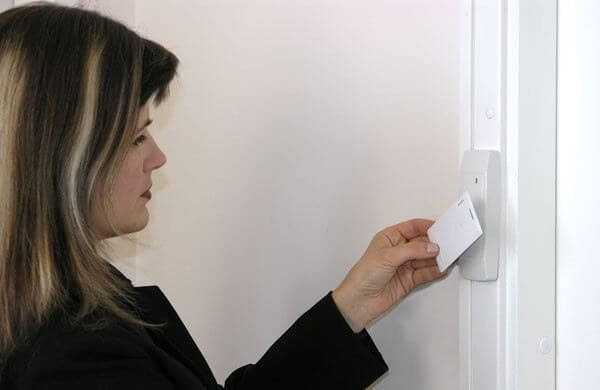
As a result, modern locks with electronic filling significantly reduce the likelihood of hacking, but in order to get rid of the shortcomings inherent in this type of equipment, the installation of uninterruptible power supplies is required. If you purchase a truly reliable device with multi-stage protection, then you need to know in advance who will install and debug it - often these are employees of the lock manufacturer.
